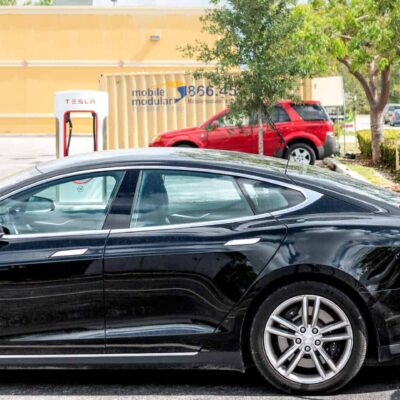Today, it seems like everything in our lives has gone digital; the pandemic pause created a need for innovations to support the shift and ignited a wave of innovation unlike any other. That paired with the rise of artificial intelligence (AI) and elevated machine learning capabilities are two of the main drivers that WIT affiliate expert and noted technology analyst Scott Steinberg feels are propelling technological change forward. During a recent WIT webinar, he explained that “more and more tasks will be outsourced to self-aware technology. More and more devices will communicate with one another and use it as an opportunity to learn from what they see in the environment to make decisions in real-time.” As these activities are contracted out to increasingly more intelligent AIs, the market will begin pushing for more advanced technological structures to support this integration.
What Will Increased AI Mean to Industries?
With the development of improved artificial intelligence comes higher levels of deployment. For example, one of the main ways many of us currently interact with AI is in the form of chatbots; these connections typically occur in online environments and the personalities are smart enough to solve human problems with 90-100% accuracy. Going forward, Steinberg sees artificial intelligence operating in every environment from factory floors to offices and chemical plants. But he also acknowledges the fact that AI is only as capable and fallible as its creators are, and it will be subject to subconscious bias. To mitigate this, AI needs to be trained with millions of situational examples as the technology gets smarter with more data it can examine.
But no matter how much information you feed it, artificial intelligence is still just like humans; it’s never going to be able to account for every situational variable. Training with historical data makes the technology predisposed to certain problems, but going forward, this technology is going to be powerful enough to create its own AI routines. And because AI can more rapidly spot patterns and process information faster than the human eye, we’re only going to outsource more tasks.
Since we are going to be trusting artificial intelligence with more important tasks, it is imperative to remember that it is still fundamentally a piece of computer software. Steinberg laments that “After 25 years in the technology business, I have yet to meet a single piece of computer software that didn’t contain glitches or loopholes and, for that matter, that is only going to be more subject to things like hackers, thieves, and outside infiltration or influence going forward. [This] presents a lot of potential challenges. As we move to a digital world, we really cede a lot of control to technology that we might have in the real world.”
Self-Driving Cars and AI
With autonomous vehicles slated to become widely available within the next few years, it is important to look at how AI will play a role in propelling this technology forward. Steinberg feels that there is going to be a lot of advancement in this space as more manufacturers begin implementing AI software; Tesla already has some self-driving capabilities built-in, fleets of autonomous trucks are hitting the road in droves, and in the next few months, he sees cities deploying entire networks of sensors that can speak with vehicles intelligently. These networks will be built on the back of 5G, allowing the devices to communicate what objects are on the road and where- ultimately transforming the cars to function more like computers. He states, “It used to be about steel but going forward, the vehicle of tomorrow really will be about silicon.”
An increased level of connectivity will create more complex vehicles with AI, real-time sensors, 3D cameras, and more all communicating, bringing on its own set of concerns. But more importantly, it also creates greater safety and security problems.
In fact, in terms of security, Steinberg thinks of the vehicles utilizing this technology as an extension of your personal computer. He sees issues arising with hackers, lockouts, ransomware, and more. What happens if someone locks you out of your car or worse, begins altering your trip to send you to an undisclosed location making YOU the ransom? Any computer system, no matter how powerful, is going to be subject to errors, technical hiccups, and, of course, outside compromise.
This pushes us to examine the safety of this software; is a self-driving vehicle going to crash less than a human driver would? And how can people ensure that their car will continue communicating with other devices on the road? Automakers have already reported around 400 crashes in a little under a year after The National Highway Traffic Safety Administration required the report to help them assess the risks and trends associated with partially automated driver-assist systems. technology. Steinberg wonders how, if a car is a computer, manufacturers will implement the necessary software updates needed to guarantee that their vehicles will continue working in sync with others on the road. This level of complexity will make it more difficult to keep things moving forward in a time where computers think at a much faster rate than humans. So how can we begin regulating this activity?
So What’s Next?
Potential Litigation
From a legal standpoint, this will raise issues with the parts, pieces, and technologies that go into these vehicles. Who is liable for the complications associated with these technologies? Who is responsible for setting standards for AI and vehicles? And lastly, who will be thinking about the way these complex systems interface with one another to ensure the safety of drivers, products, and valuables? Steinberg feels that “technology really kind of rockets ahead and oftentimes, we have to play catch up. We struggle to think about the potential applications, use cases, and scenarios that these advancements may present, at least from a legal standpoint.” And with this comes the opportunity for disputes on a multitude of fronts.
Impending Regulations
It’s too early to say how manufacturers can prepare for developing markets as there will be automakers, technology companies, software providers, hardware creators, and the government all participating in the creation of them. There are currently no major governing laws that are geared to help with the integration of AI and technology, amplifying the potential for conflict among parties from differing industries. He details that “There’s a big “mod” [modifications or upgrades to assets] culture around cars and upgrades that are going to impact the on-road experience. What’s going to happen with resell and the transfer of data that’s going to reside in that car when you bring it to a new owner? On top of that, you’re also going to have to wonder if you have different states cracking down in different ways on the way the technology exchanges information and what types of data can be traded.”
In order to help push regulations forward, Steinberg feels that we are going to need more participation in this conversation from industry thought leaders; this way, they can work alongside the government to keep up with all of this change. In his opinion, “We need advisory boards, we need experts, we need to get many voices at the table. But we really need to be having a lot of these conversations at the highest levels, a lot more frequently and a lot sooner.”
Stay tuned for more insights from our conversation with WIT affiliate expert Scott Steinberg. Mr. Steinberg is hailed as one of the world’s most celebrated futurists and strategic innovation consultants. He has been featured in hundreds of media outlets from CNN to TIME to The Wall St. Journal, with the Fortune 500 calling him a “defining figure in business and technology” and “top trendsetter to follow.”
Next in this series, we’ll cover innovations in wireless technologies and the implications of these advancements on the market.
Learn more about our top industry and technical experts in automotive technology.




